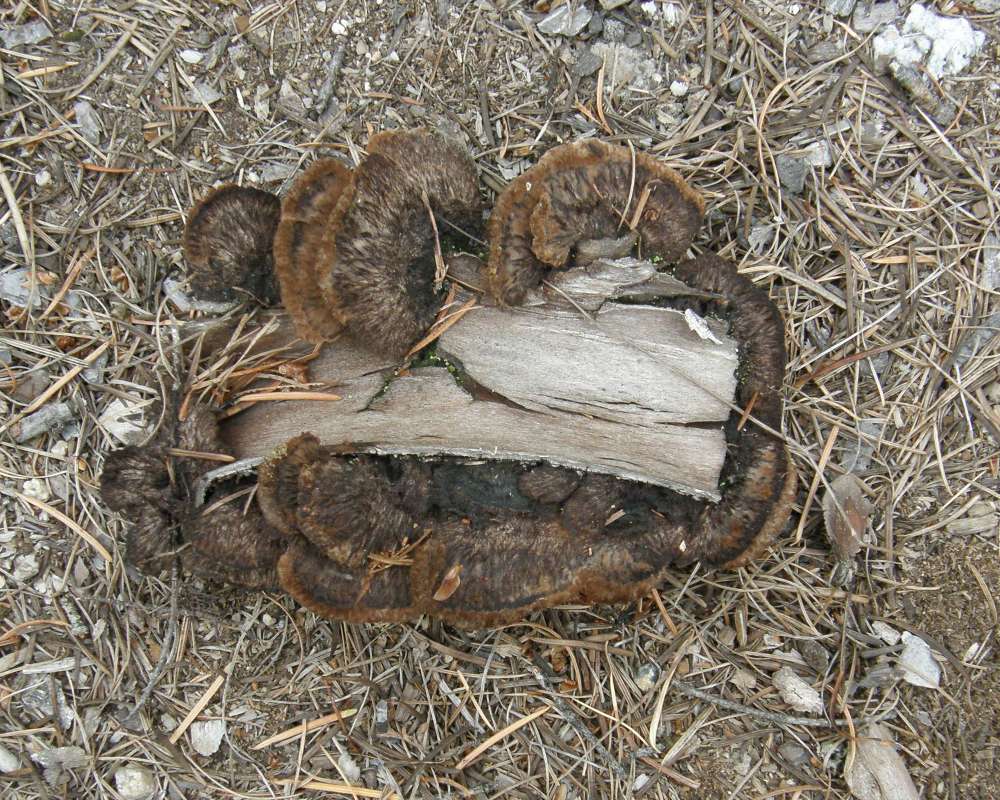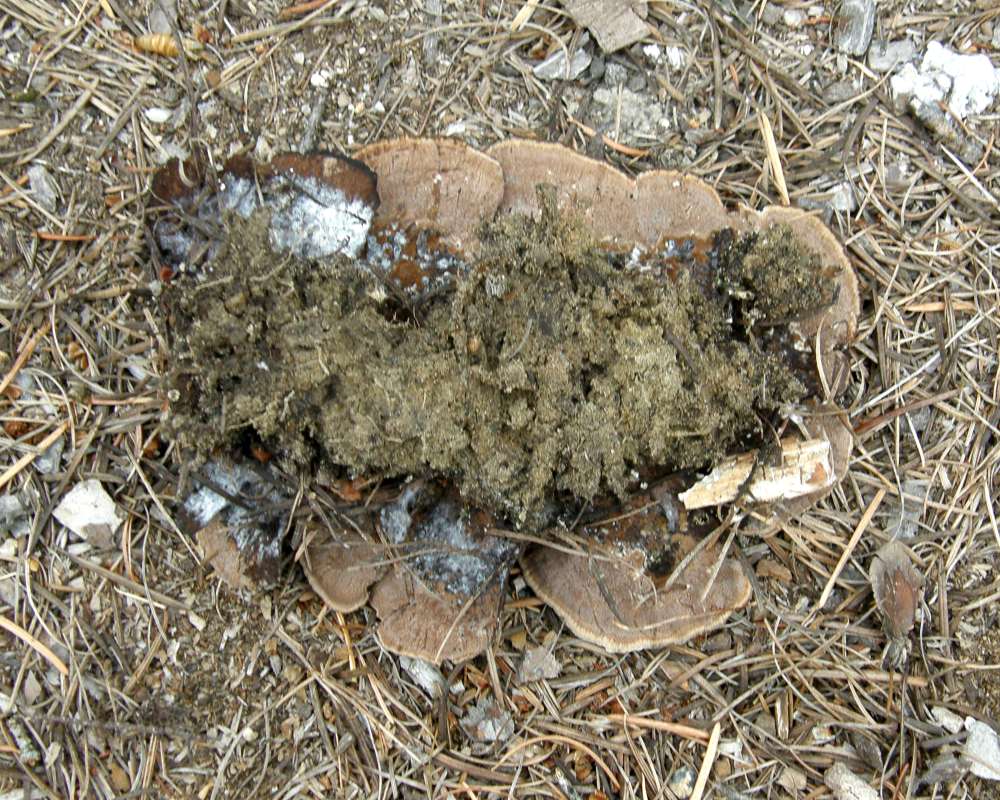SPECIES INFO
This shelf fungi (Polystictus species) could be Coriolus versicolor. (Genus synonyms are Polystictus and Tremetes)Polyporales make up a very large order of fungi that vary greatly in appearances. They bear spores in tubular structures on the underside of the fruit body. The species of this order generally grow on logs or trees. They characteristically have tough, leathery fruit bodies. Their stems or attachment points are usually lateral. Many polypores are perennials. These add new layers of pores each year below the old ones. Very large fruiting bodies can thus be built up over several years.
Basidiomycotina is a phylum that contains most of the large fungi such as mushrooms, toadstools, puffballs, stinkhorns, coral fungi, etc. Many species in this group are deadly poisonous. Wild collected mushrooms should not be eaten as the chance of a mis-identification is very high. Most of the photographs in this group have been taken in the field by amateur photographers. There are certainly errors of identification in this group of images. This product should not be used to make decisions on edibility.
Most fungi are parasites on plants. Identification of many fungi is very difficult because their form and color is dependent on local conditions. One should not eat wild collected mushrooms as many edible species have poisonous look-alikes. Although we believe many of the species we show in this group are correctly identified, we are also aware of instances where we doubt the identification. We include these species to show the diversity of life, as opposed to a method of precise species identification.



